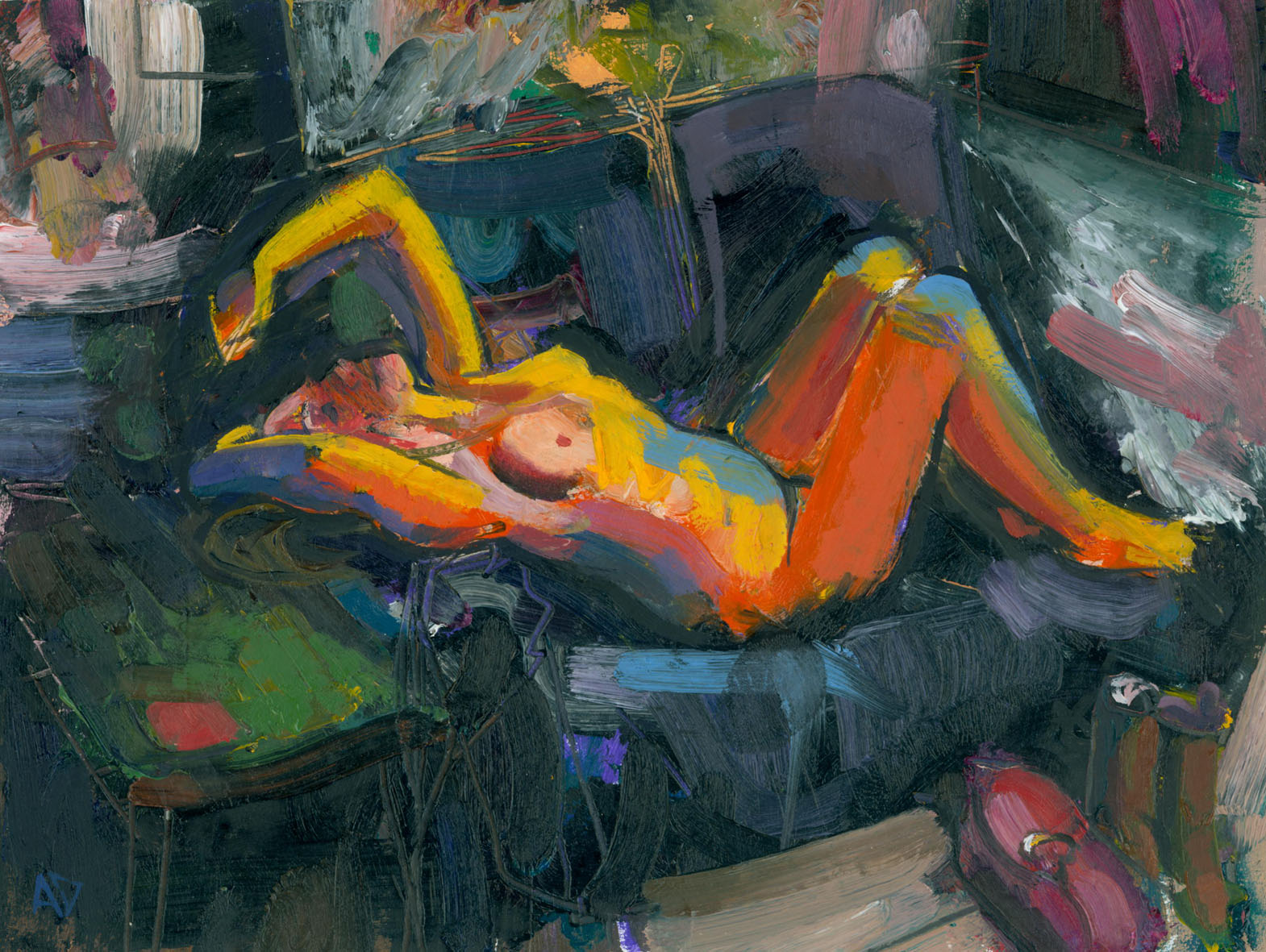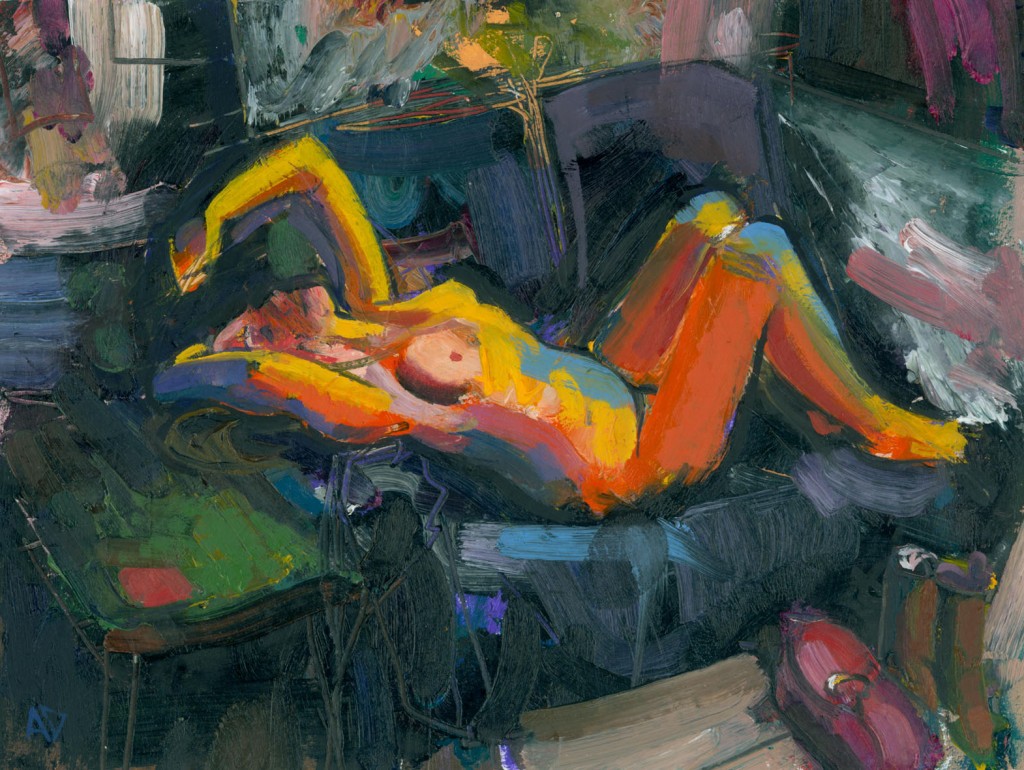I have always painted and drawn from life (the nude). Originally I was encouraged by Royal Academy Schools (RAS) graduate, Anne Roberts. At Great Yarmouth we were further guided by Nicholas Ward RAS and at St. Martin’s it was Eric Luke RAS, who maintained this area of study. We drew from an assortment of models both male and female and never questioned the integrity of the discipline. It was considered ‘generally good and edifying’ for students to draw from life.
Eventually I became a student at the Royal Academy Schools and spent an academic year drawing from the nude plus some of the following year painting from the model. Women students occasionally made low growling noises about having to draw ‘yet another female model’ – but on balance, Greenham and his cohort drafted in male and female models without prejudice. If life drawing teaches Art students anything, they learn to focus on ‘the human’ and gain a sense of measurement which can’t be pre-packaged as a Photoshop plug in. There are numerous combinations of the Phi ratio to be found in the visual phenomena of the human form; acquainted with them students gain a sense of visual rhythm behind appearances. And of course, Art which expresses a narrative about the human condition, through the body can often be more engaging and relevant than any other.
Painting and drawing the nude within the confines of Art college is not the same as when an artist works alone with a model. Classes allow students the opportunity to learn from their peers; there is safety in numbers. Employing someone and setting out to make artworks based on the nude during the post-modern era is a precarious venture. Apart from doing something anachronistic there is a requirement for artist’s to justify the practice especially if the artist is male and the model female. Inevitably, there can be the suggestion of sexual intrigue. But why not? The prudishness of society towards representations of female nudity seems remarkable. Even between the wars in Paris, Modigliani had an exhibition shut down and censored by the police because his paintings depicted pubic hair.
In my own experience, it is not easy to show paintings of the nude – particularly in the provinces. In London it doesn’t seem to matter, but in the shires there is a marked frigidity amongst the pious who waddle about censoring anything to do with the pleasures of the flesh. They seem to forget they were once sexual beings themselves and like all of us, probably confront their own nudity each night before bed.
In ‘Etude’ the intense, turbulent use of paint, expressionistic colour and vigorous attack in the brush-work all celebrate a good level of artistic endeavour because of the risks taken in the process. At first I blocked in areas of colour. Then I didn’t know what to do, so I left it for a year. When I resumed painting, I mixed colours I wanted to use (purely subjective) and worked without restraint. I upset the apple-cart, precipitating a much livelier response by ‘not caring’ – in a similar way no doubt to which the Irish Republican poet, Patrick Kavanagh set about doing the same. The result is successful, a study of the female nude, expressing a range of emotions implied through use of colour; encapsulating a romantic ideal hard to find in the shires of post-modern Britain. There is a dishevelled earthiness to the painting which is distinctly characteristic of the British school.


Leave a Reply